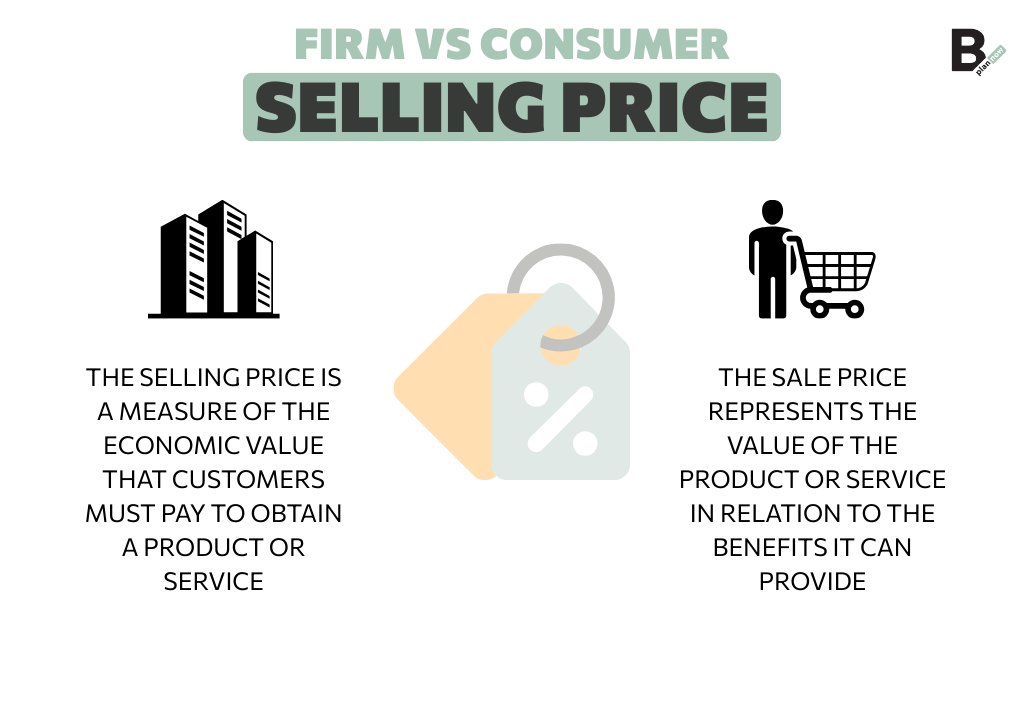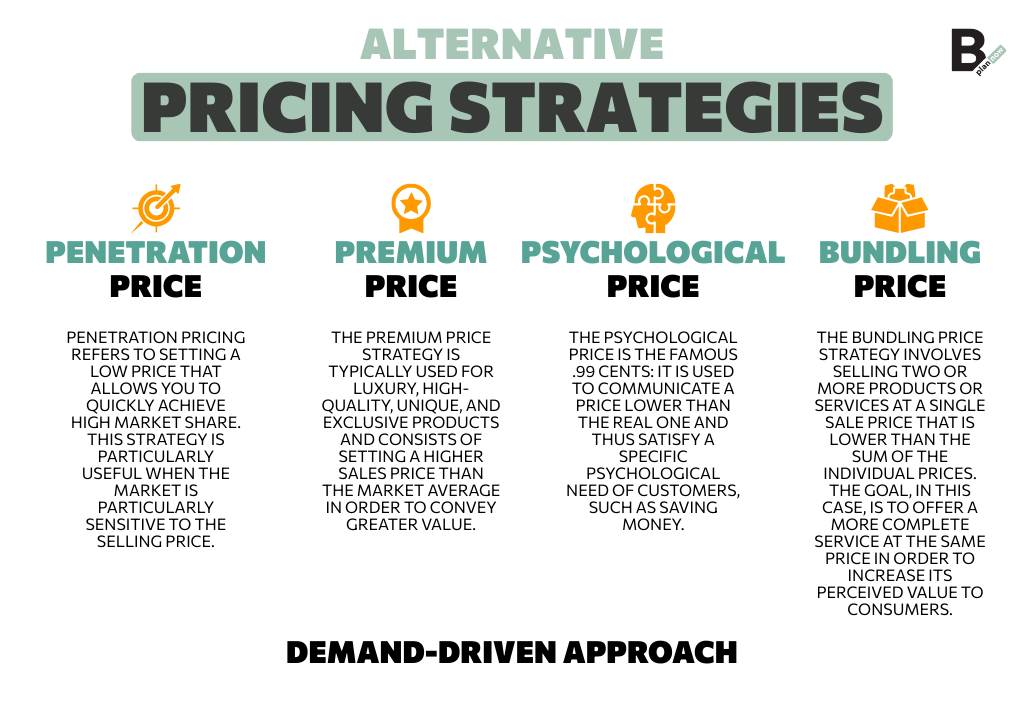If you don’t know how to calculate the selling price of your products, don’t miss this guide dedicated to pricing. Here you will find the best tips for identifying the ideal price, as well as formulas and concrete examples.
What is selling price (and what it really represents)
Although it is fairly easy to define, in practical terms, what selling price is, identifying what it really represents, for businesses and consumers, may not be as easy. Let’s proceed in order and get some clarity right away.
Definition and dual point of view: company vs. consumer

From a company’s perspective, the selling price represents the measure of economic value that customers must pay to obtain a product or service. The final amount charged by the company is the result of a number of considerations related to competition, cost, and demand.
On the other hand, from the customer’s point of view, selling price means the value of the product or service in relation to the benefits it can bring.
Price as the balance between value offered and perceived value
In the wake of what has just been said, you will not be surprised to learn that the higher the benefits are relative to the price of the product or service, the higher the perceived value to consumers is also.
To properly draft your business plan, you should also know that the selling price is considered to be in balance when the value offered by the company equals the value perceived by customers. Remember, in this regard, Seth Godin‘s famous quote:
“In price positioning, it is not so much the number, but the value that the number represents.”
How to calculate the sales price: the simplest and most widely used method
To calculate the sales price you can resort to the simplest and most widely used method: start with the production costs you incurred to produce the product or service you offer. The basic concept you need to keep in mind is that the sum of the total costs must necessarily be less than the selling price, so as to ensure you have a profit margin.
The profit margin is a value expressed in percentage terms and indicates the profit you derive from selling one unit of your product or service. To define it, you must first determine the unit cost of production (dividing the total cost by the number of units) and, then, determine the percentage of profit you want to make.
The sales price formula is:
\(Selling\hspace{0.1cm}price= Unit\hspace{0.1cm}cost\hspace{0.1cm}+\hspace{0.1cm}Margin\hspace{0.1cm}\%\)
Costs to consider: fixed, variable, direct and indirect
As we have just mentioned, to define the selling price you have to start with costs and, therefore, you also have to consider how much it costs to open a business (and many other aspects). But what, specifically, are the costs you need to include in your evaluation?
What to include and how to break down the costs
The costs you need to consider in arriving at the sales price are fixed costs, that is, day-to-day costs that are not linked to the level of production, and variable costs, that is, costs that are linked to production and therefore vary as production changes.
It is also essential to know the distinction between direct costs (all expenses related to goods, services and materials directly related to the production of products or services offered by the company) and indirect costs (the expenses incurred for materials, services and maintenance that are necessary for the operation of the business).
Practical examples for manufacturing and retail sectors
In this section you will find some practical examples of costs related to different manufacturing and retail sectors. In a clothing company, the labor cost for each worker who physically works on the production of the garment should be considered. In a food production company, the cost of energy per kw consumed should be included under cost.
In retail, among the costs associated with running a supermarket, personnel costs play an important role, while for a fashion store a relevant item is the cost for advertising.
Calculating the selling price for handcrafted products
If you need to calculate the selling price of a handicraft product, you need to consider a few more factors than those enunciated so far. Specifically, you need to consider the uniqueness of the product and the rarity of the work done, two aspects that, inevitably, end up affecting the value of products or services.
The value of time, expertise and uniqueness
When setting the selling price, you must be clear that your time is also valuable-that is why you should set the hourly rate you want to earn from the sale of the product or service.
The sales price, as just mentioned, is also affected by the existence of a unique and patented formula and the exclusivity of the item to be sold, two aspects that allow you to increase the mark-up.
Approaches to pricing: demand, profit, competition
There are several approaches to determining the selling price once costs have been calculated. The first of these focuses on demand.
Demand-driven approach and alternative pricing strategies
The demand-driven approach focuses attention on the buyer. If you decide to take this approach you should know that it is important that, first, you precisely define your buyer personas.
Several alternative pricing strategies refer to the demand-driven approach that can be put into practice in the marketing plan.

We mention a few of them:
- Penetration pricing
Penetration pricing is when you set a low figure that can enable you to achieve high market share in a short time. This strategy is especially useful when the market is particularly price sensitive.
- Premium price
The premium price strategy is typically used for luxury, high-quality, unique and exclusive products and consists of setting a higher selling price than the market average in order to convey greater value.
- Psychological price
Psychological pricing is the famous ,99 cent: it is used to communicate a lower price than the actual price and thus satisfy a certain psychological need of customers, such as to save money.
- Bundling price
The bundling price strategy involves selling two or more products or services at a single selling price, which is lower than the sum of the individual prices. The goal, in this case, is to offer a more comprehensive service at the same price so as to increase its perceived value to consumers.
Profit-oriented pricing (with ROI/ROS formulas)
The profit-oriented approach, on the other hand, is based on other marketing KPIs and, specifically, the balance between costs and revenues. The formula is as follows:
\(Profit = (Price\hspace{0.1cm}x\hspace{0.1cm}Quantity)\hspace{0.1cm}-[Fixed\hspace{0.1cm}costs\hspace{0.1cm}+(Variable\hspace{0.1cm}unit\hspace{0.1cm}cost\hspace{0.1cm}x\hspace{0.1cm}Quantity)]\)

There are two methods for calculating profit:
- Objective profit method
It is aimed at achieving a certain percentage of profit over sales volume.
- ROS/ROI target method
This method is used to set prices to achieve certain targets for return on investment each year.
Competitive pricing and competitor analysis
If you want to take a competitor-oriented approach, of course, you must first conduct a competitor analysis so that you have a clearer picture of the situation. This approach is based on competitors’ actions and prices, interpreted as constraints on consumer behavior.

Some of the best strategies, in this area, include:
- Customary pricing
This method is used for products, such as pizza or coffee, for which aspects such as tradition or industry characteristics do not give the possibility of identifying a selling price outside a certain range.
- Method based on market price
It is suitable for products for which it is difficult to define a specific market price and consists of selecting a market price so as to then place below or above it.
- Loss leader
It is a strategy related to a product used as “bait” (or “loss leader”) to attract customers in the hope that they will then buy more.
Sales price and startups: how to survive between margins and experimentation
Selling price is a particularly sensitive issue for startups because finding the right one, for this particular type of company, is often a matter of survival. In this regard, we have three tips for you.
Test prices in the early stage
For a startup, testing prices in the early stage is crucial because it is what allows you to understand whether your proposed product or service actually has market demand. In practical terms, at this stage you can find out whether the product solves a real problem and whether the target audience is interested and willing to pay the amount you have identified.
The Importance of Customer Feedback
Customer feedback is very important in the early stage phase of a startup, that is, when the focus is to identify, precisely through consumer input, the right product/market fit that will enable the first revenues to be earned.
Adjust the price to grow without losing sustainability
The identified sales price is not final: based on the aforementioned customer feedback, but also in relation to sales data, you can (must!) adjust the price so as to ensure the sustainable growth of your startup.
Mark-up: what it is and why it can make your life easier
It is now time to introduce the concept of mark-up, a profit indicator that is used to better calculate the correct sales price when testing a product, considering fixed unit costs, variable costs, and the expected profit margin.
Difference between mark-up and margin
Although both are indicators of profit, there is a difference between mark-up and margin: the former is based on cost, while the latter is based on selling price. Mark-up can be defined as the difference between selling price and production cost or as the specific percentage that is added to cost to find the correct selling price. Margin, on the other hand, is the percentage of profit on the selling price or, more accurately, the percentage of the selling price that should be considered as profit.
How to find (and tweak) the right price
We cannot conclude this guide on how to calculate the sales price without taking a closer look at one aspect and, that is, how to find (and tweak) the right price.
Testing the elasticity of demand
To tweak the price in search of the correct one, you need to test the price elasticity of demand. This is a particular indicator that measures the responsiveness of the quantity demanded of a product or service to a percentage change in price. It is a pure number and does not depend on the unit of measurement.
Review the price over time
Keep in mind that revising the selling price over time is important not only to adjust the price itself to new market conditions. You should do so, in fact, also to increase the perception of the value of the product or service in the eyes of consumers and prevent them from coming to no longer perceive it.
Do you want to read all the articles related to the stage your startup is in?


